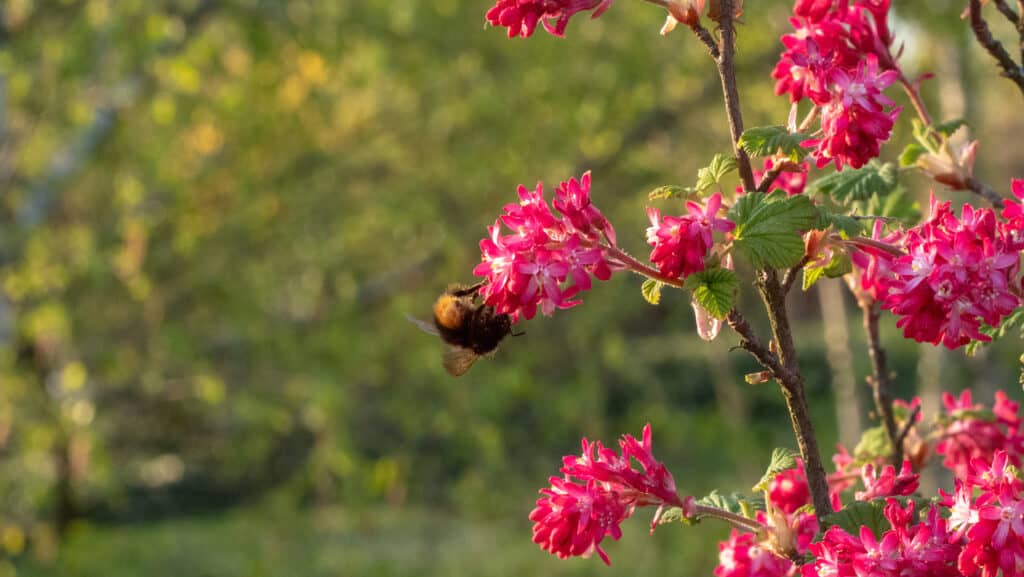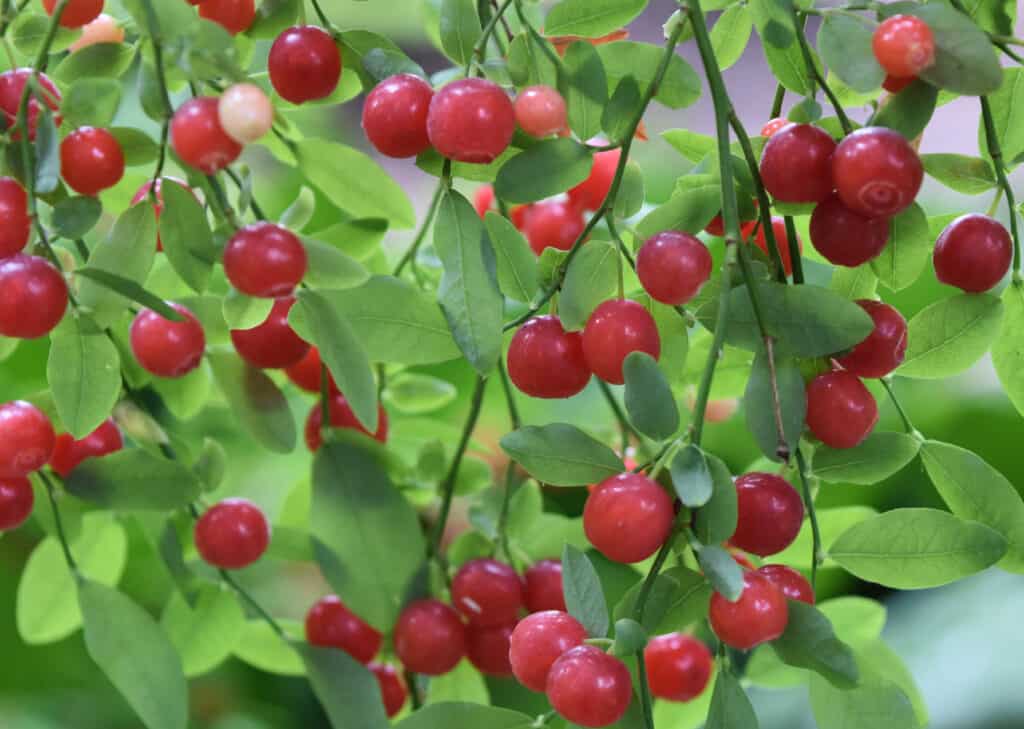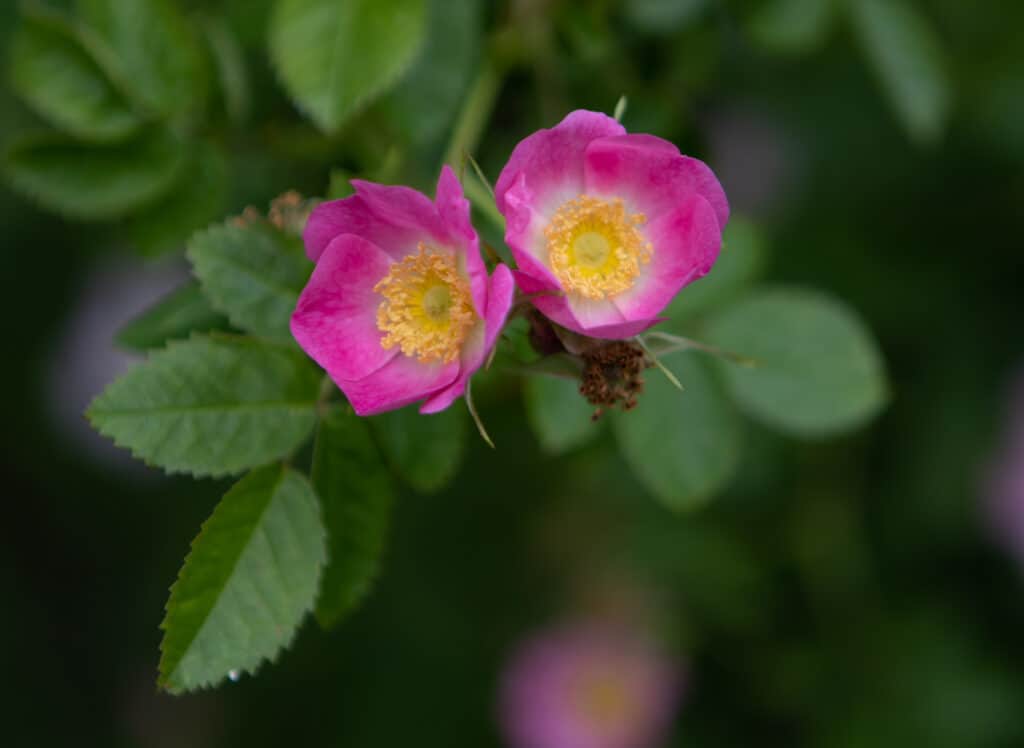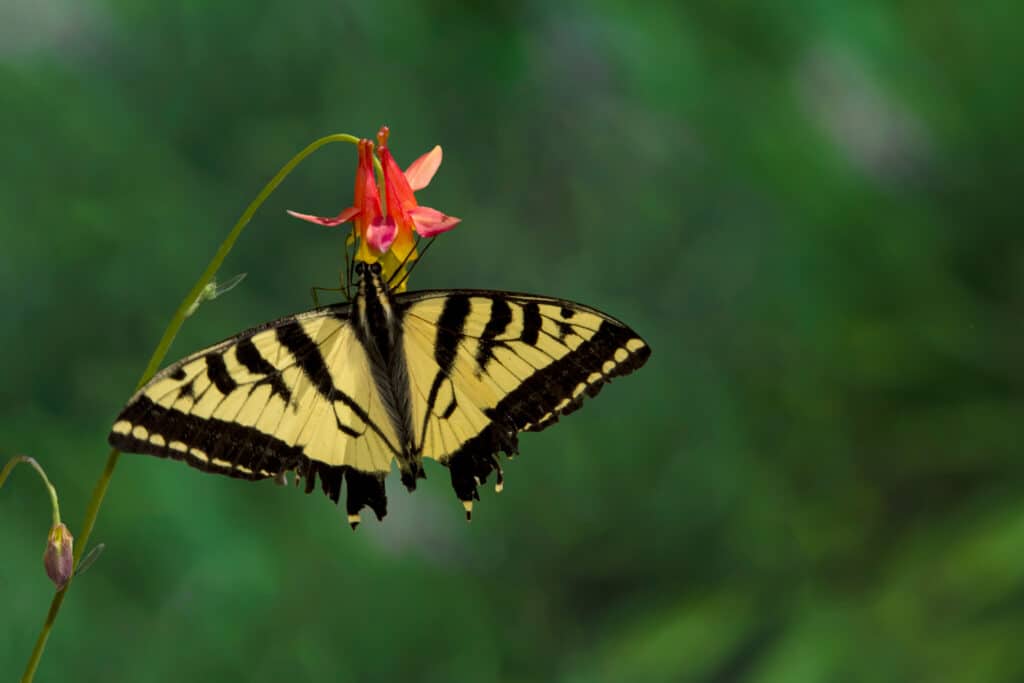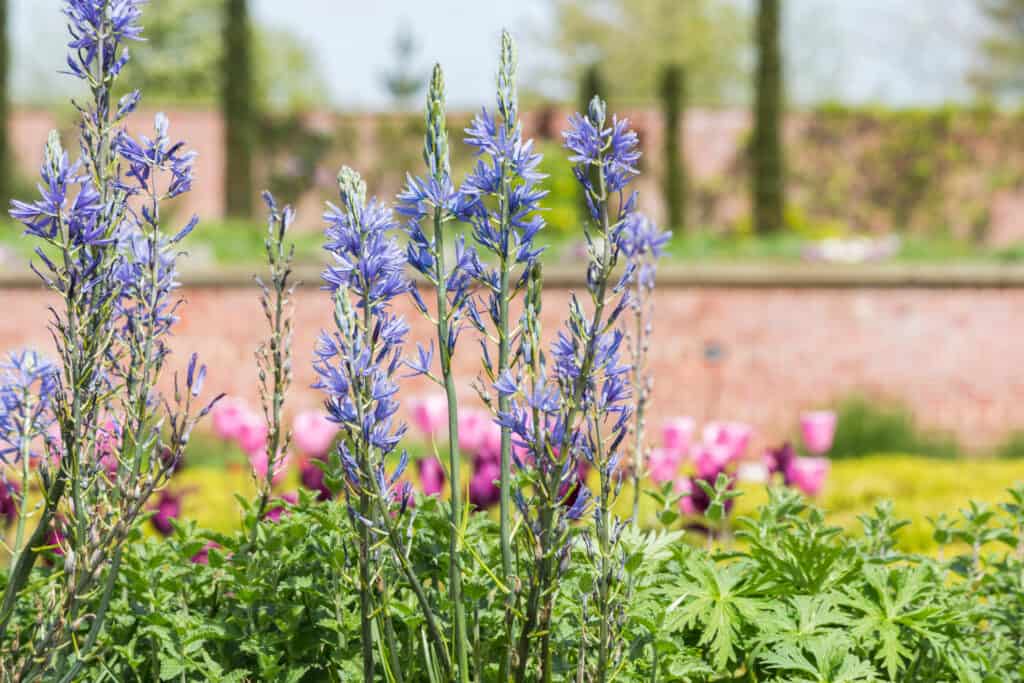Shop Mother’s Day Bouquets
Figaro's Blog
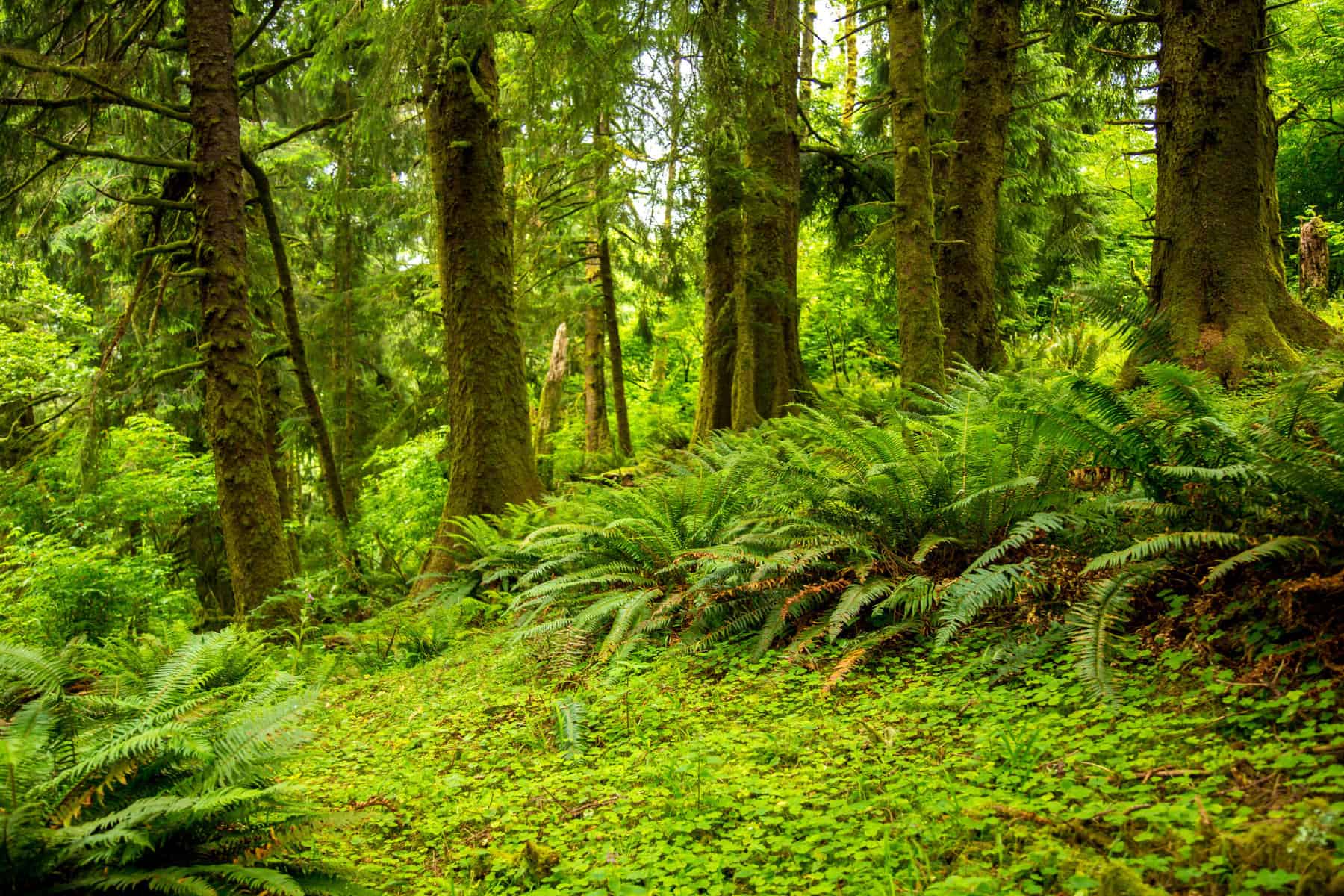
Welcome to BC’s South Coast, a region renowned for lush green landscapes, diverse wildlife, and abundant natural beauty. One of the unique features of our region is the richness and diversity of our BC native plants, which have evolved to thrive in the distinct soil, climate, and cultural conditions found here.
Before we dive into the world of BC’s native plants, we first acknowledge that when we refer to “British Columbia” or “BC,” we refer to the traditional, unceded, ancestral and current lands of the Indigenous nations that have inhabited them for thousands of years. We recognize that their stewardship and connection to the land continue to this day. BC is home to many diverse Indigenous nations, each with their unique histories, cultures, and languages. Many of the plants we’ll be featuring here have an interdependent relationship with and remain important to Indigenous communities today.
The Benefits of BC Native Plants
British Columbia is home to a wide variety of native plants that are not only attractive but also serve numerous ecological functions. From towering conifers to delicate wildflowers, our native flora offer a diverse range of colours, textures, and fragrances. They are also the backbone of our local ecosystems, providing habitat and food for wildlife, regulating water and nutrient cycling, and contributing to biodiversity.
For over a decade, native plant enthusiasts and experts have been advocating for greater adoption and use of native plants, citing the benefits noted above. And gardeners have responded; native plants continue to be popular. Typically, the following are named as benefits to growing native plants in the home garden:
- Biodiversity: Native plants provide essential habitat and food for local wildlife, including birds, insects, and mammals. By planting native species, you can support local ecosystems and promote biodiversity in your area.
- Lower maintenance: BC native plants are adapted to our local climate, having evolved to withstand our mild, wet winters and dry summers. If used thoughtfully in a home garden or landscape, they may require less water, fertilizer, and maintenance compared to non-native plants. Once established, they are generally more resilient and self-sustaining.
- Conservation: Some native plant species in BC are considered threatened or endangered due to habitat loss and other human activities. By incorporating native plants into your garden, you can contribute to their conservation and help protect these precious resources for future generations to enjoy.
- Aesthetics: BC native plants offer a unique and diverse array of colours, textures, and forms that can add beauty and interest to your garden. From the striking blooms of rhododendrons to the majestic presence of Douglas firs, native plants can create a sense of place and evoke a connection to the natural beauty of the region.
Gardening with BC Native Plants
While we truly love our native flora, we’re the first to admit that not all BC natives belong in the urban garden (we’d never suggest you plant Douglas Fir or Skunk Cabbage on your patio!). But it goes beyond size and growth habit. Because our native plant species have co-evolved with animals, fungi, and microbes to form a complex network of relationships, they don’t always work well in isolation. For example, salal and huckleberry—two iconic BC native plants familiar to anyone who’s ever taken a walk in forest on the southwest coast—often struggle when grown in conditions that don’t resemble those of the forest floor.
For best success, learn about a plant’s natural habitat—is it common in dense rainforests or meadows? Stream edges or mountainous crags?—and strive to mimic those conditions in your garden. Or, better yet, choose plants that enjoy the conditions you already have.
Popular BC Native Plants
There are countless native plants to choose from in BC, each with its unique characteristics and growing requirements. Here are a few popular native plants that you might consider incorporating into your garden:

Tall Oregon Grape (Mahonia aquifolium) is a sun-tolerant evergreen shrub with a flair for the dramatic, providing year-round interest in your garden.
Oregon Grape (Mahonia aquifolium)
This evergreen shrub features serrated, holly-like leaves, growing up to 10’ tall. It produces striking clusters of bright yellow flowers in early spring, providing a good source of nectar for early pollinators. These are followed by blue-black berries in the summer. An adaptable plant, Tall Oregon Grape grows in full to part sun, and isn’t too fussy about soil.

Western Sword Fern (Polystichum munitum) is a familiar site in BC forests. It also works nicely in the home landscape.
Sword Fern (Polystichum munitum)
This iconic fern is native to our forests and thrives in damp or dry shade areas. It features large, glossy fronds with evergreen foliage. It makes a stunning ground cover for shade. Clip back older fronds in early spring if desired.
Red Flowering Currant (Ribes sanguineum)
This deciduous shrub produces showy clusters of pink or red flowers in the early spring, followed by blue-black berries in the summer. It is a valuable nectar source for pollinators and a gorgeous addition to any garden. Be sure to give it well-drained soil and a sunny location.
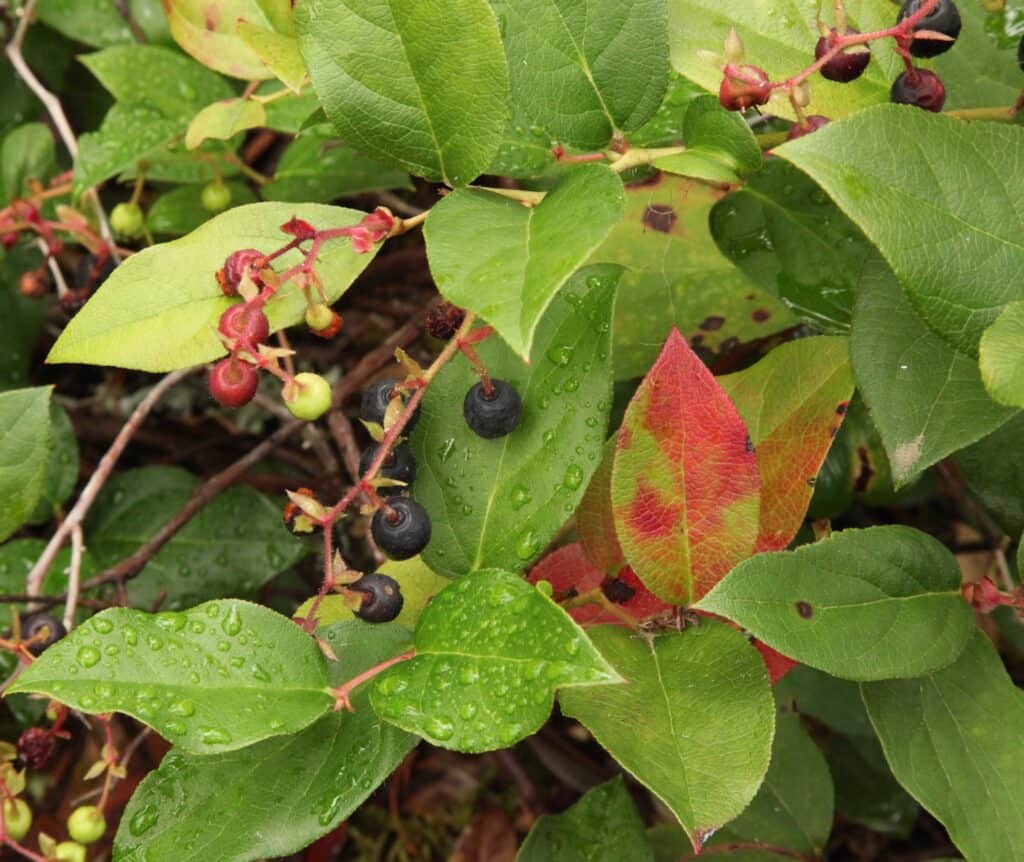
Salal (Gaultheria shallon) is a common understory shrub in BC, where it is used extensively by Indigenous groups.
Salal (Gaultheria shallon)
Instantly recognizable, this evergreen shrub produces clusters of bell-shaped pink or white flowers in the spring, followed by edible blue-black berries. Its leathery leaves make it an attractive and versatile plant for the home garden. For best results, plant in part shade, in well drained but moist acidic soil. It can be used as part of a mixed border or as a ground cover. It provides important habitat and food for wildlife. Salal leaves can be susceptible to root weevil damage.
Red Huckleberry (Vaccinium parvifolium)
This deciduous shrub produces clusters of small, red berries in the summer that are enjoyed by wildlife (and humans!). Like salal, it enjoys conditions similar to those found in our coastal forests. Give it well-drained, acidic soil and part sun to part shade for best results.
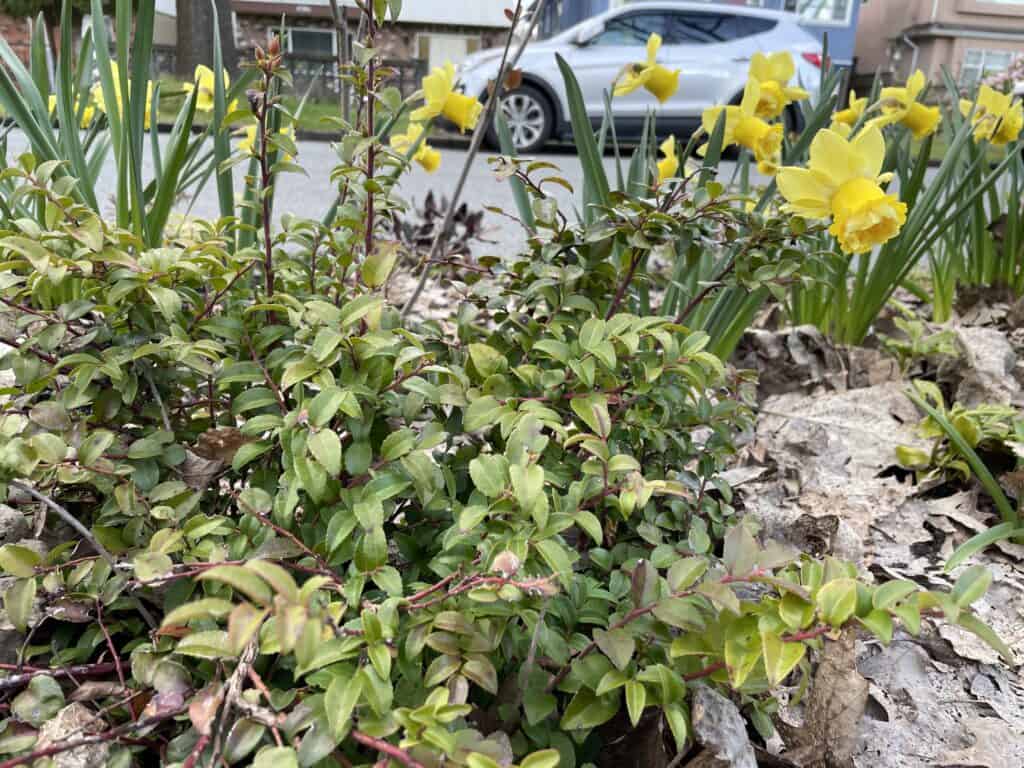
Evergreen huckleberry is a tough, adaptable shrub, shown here as part of a Vancouver boulevard garden planting.
Evergreen Huckleberry (Vaccinium ovatum)
This evergreen shrub has attractive, glossy leaves, often with a purple tinge. It produces bell-shaped pink-white flowers followed by purple-black berries. Grows slowly to 6’ tall and is well suited to either sun or shade.
Nootka Rose (Rosa nutkana)
This native rose produces fragrant pink or white flowers in the spring and summer, followed by attractive rose hips in the fall. It is well-adapted to coastal areas and attracts pollinators. In the home garden, it can become thicket-like, so give it room to spread.
Red Columbine (Aquilegia formosa)
This perennial wildflower is known for its unique, bell-shaped flowers in shades of red and yellow. It attracts hummingbirds and butterflies and can be a charming addition to any garden, especially in a woodland or cottage-style setting.
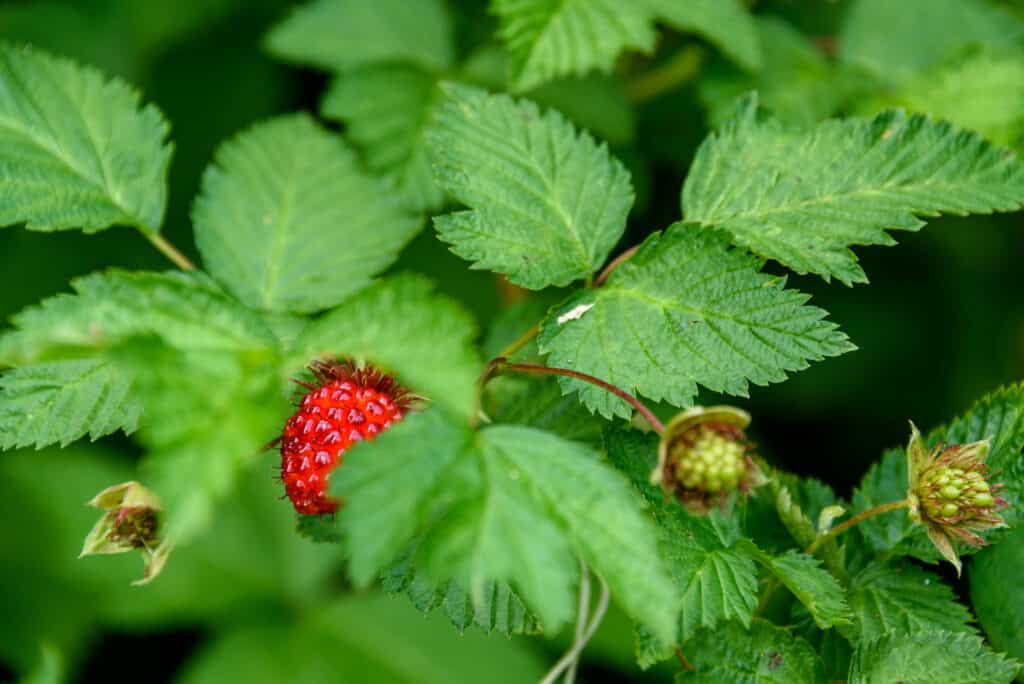
Salmonberry, so named for its colourful berries that look like clumps of salmon roe, is a thicket-forming deciduous shrub.
Salmonberry (Rubus spectabilis)
This deciduous shrub produces stunning pink flowers in the spring and delicious edible berries in the summer. It provides important habitat and food for wildlife. Salmonberry is often found growing in moist coastal forests or stream side; it wants a moist, well-drained soil and room to spread.
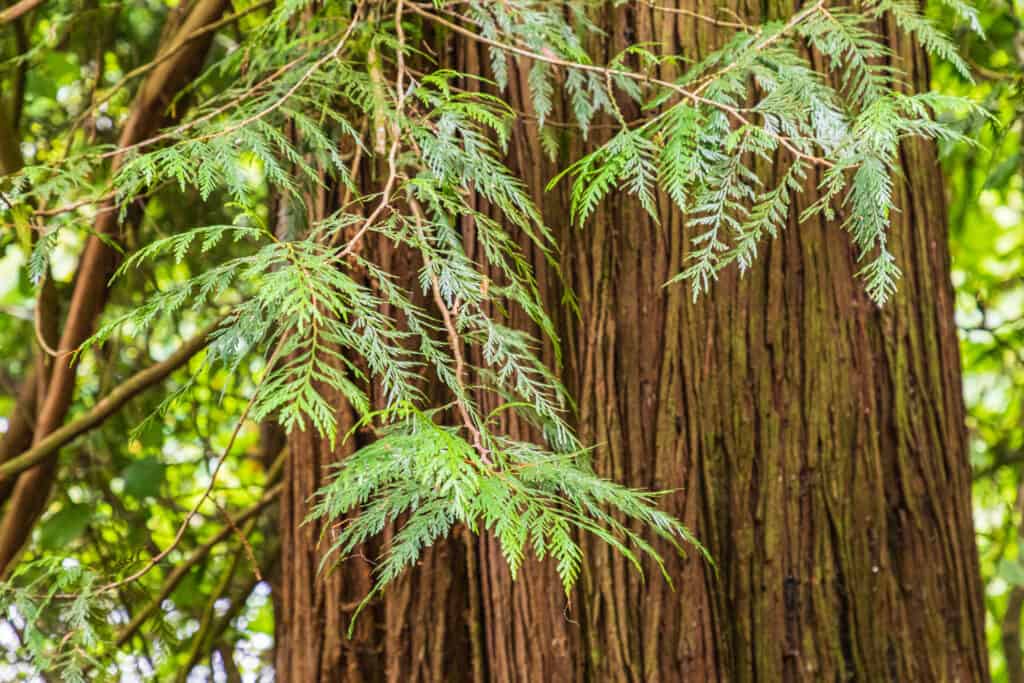
The western red cedar has been called “the cornerstone of Northwest Coast aboriginal culture.” Coastal people used the wood for dugout canoes, house planks, bentwood boxes, clothing, and many tools such as arrow shafts, masks, and paddles.
Western Red Cedar (Thuja plicata)
While not exactly a small-space tree, we have to mention this iconic evergreen. Known for its aromatic wood and graceful branches, it provides excellent habitat for birds. Its wood has cultural significance for Indigenous communities in BC. It prefers moist to wet soils.
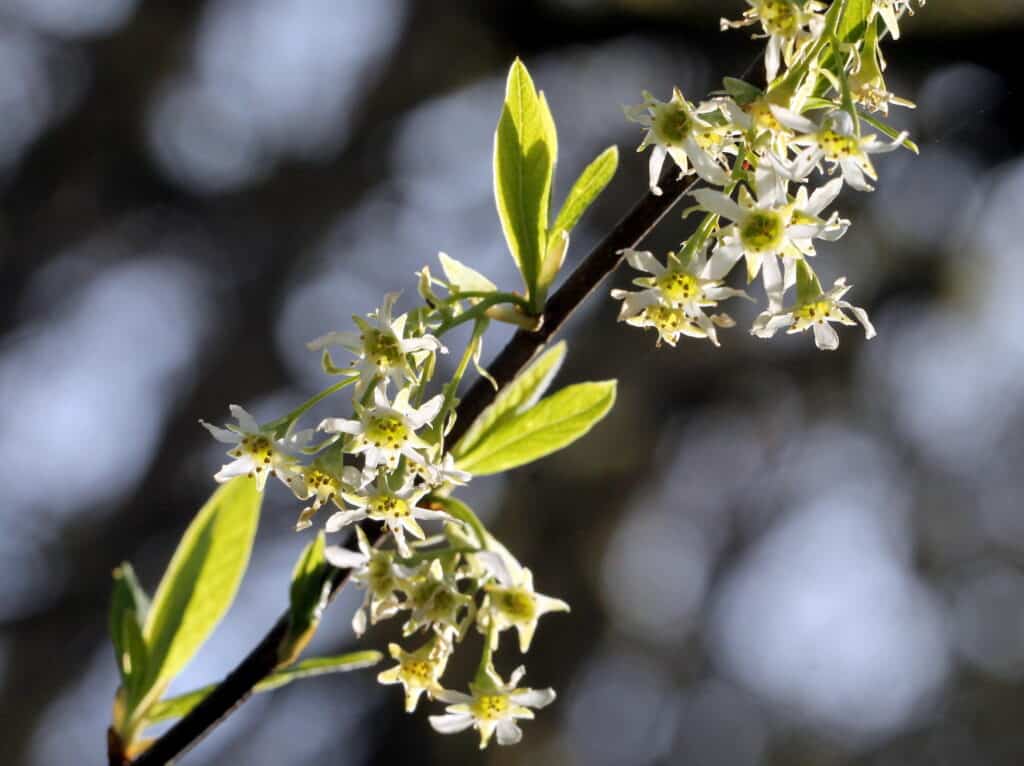
Indian Plum’s white flowers are followed by somewhat bitter fruits that are beloved by cedar waxwings and other mammals.
Indian Plum (Oemleria cerasiformis)
Also known as osoberry, this early blooming deciduous shrub produces fragrant white flowers in the early spring and is an important food source for pollinators. Birds enjoy its ripening fruit. Best suited to informal, woodland gardens, it has a thicket-forming, suckering habit. Both male and female plants are needed to produce fruit. It prefers acidic, moist but well-drained soils, and will grow in full sun to part shade.
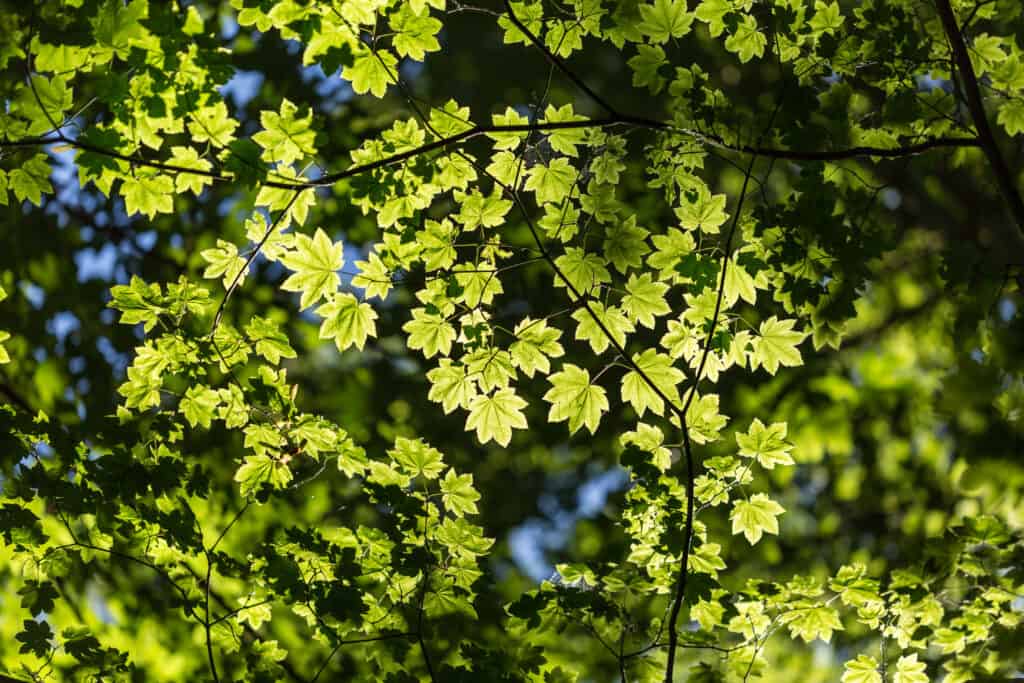
Vine maple is a fantastic ornamental tree for small gardens. It has beautiful fall colour, with trees growing in shade turning a pale yellow and those growing in sun turning orange or scarlet.
Vine Maple (Acer circinatum)
The vine maple, so named for its very slender, often sprawling, branches, is a common understory tree. It thrives in either sun or shade, and is a very popular small tree for the home landscape. It prefers moist soils.
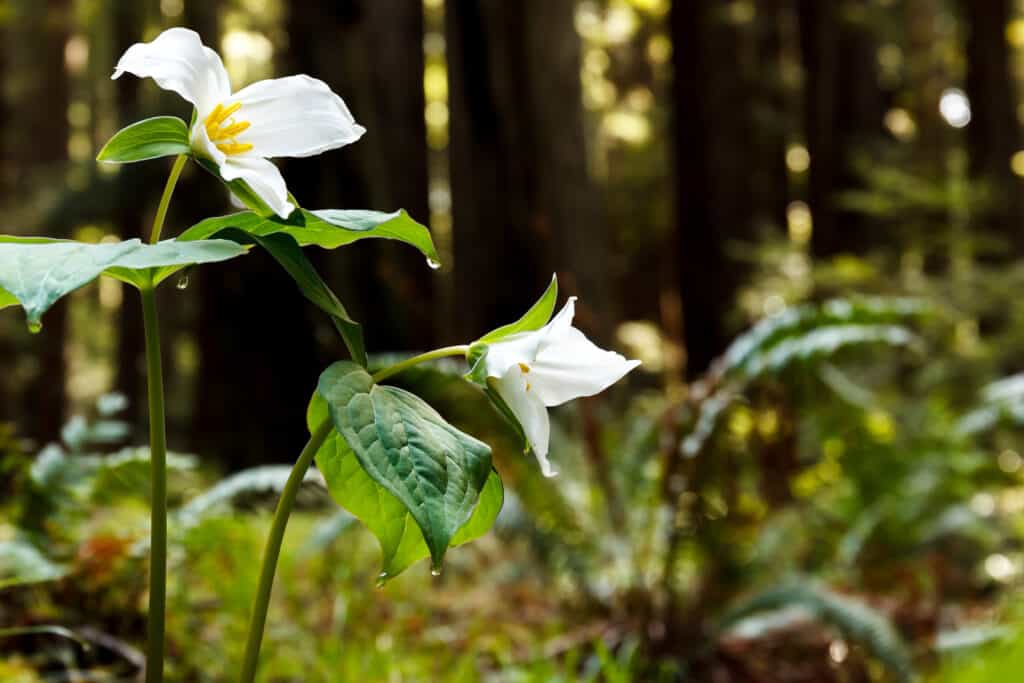
White trillium (Trillium ovatum), an ephemeral spring wildflower, is a lovely low-growing herbaceous perennial for shady sites.
Western Trillium (Trillium ovatum)
This native wildflower is known for its delicate white flowers with three petals and three leaves. It blooms in the spring and provides important habitat for pollinators. Its ideal site is one that gets morning sun and afternoon shade. It also thrives in bright shade beneath deciduous trees. Trilliums want fertile, humus-rich, well-drained soil.
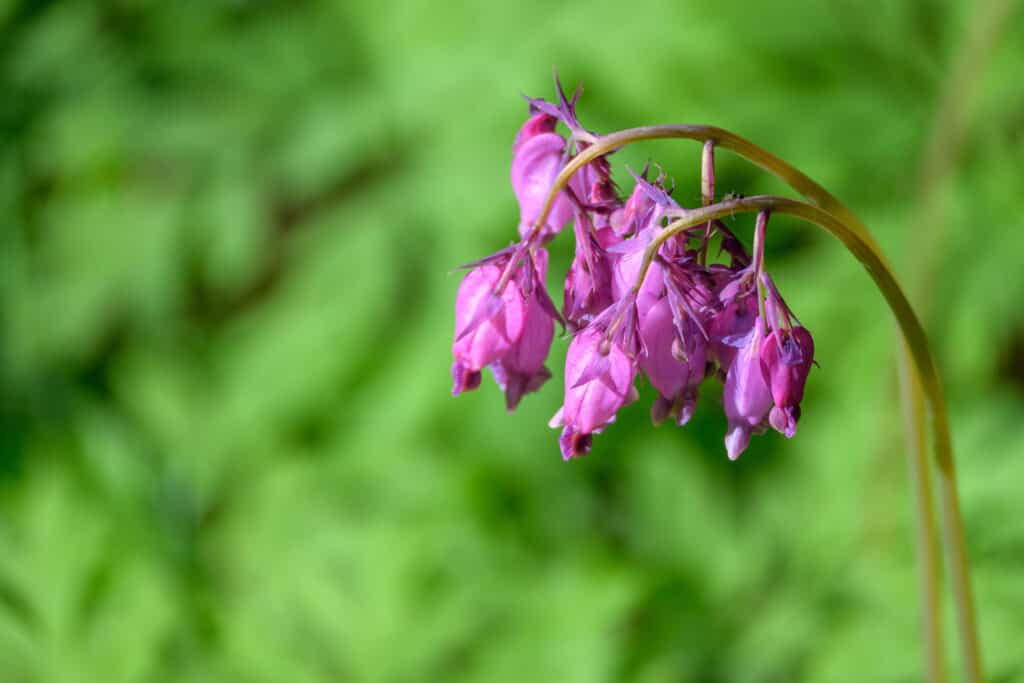
Dicentra formosa or Pacific Bleeding Heart produces delicate looking, ferny foliage and pink-mauve blossoms. It’s an adaptable plant that’s tougher than it looks.
Pacific Bleeding Heart (Dicentra formosa)
This perennial wildflower is known for its delicate, heart-shaped flowers in shades of pink or white that bloom in the spring. It thrives in shady, moist areas but also tolerates the dry shade beneath evergreens. It is somewhat drought tolerant, dying back over the heat of summer but rebounding the following spring. Its blue-grey foliage is unusual for a shade-loving plant.
Western Camas (Camassia quamash)
This bulbous clump-forming perennial produces spikes of stunning blue or purple star-shaped flowers in the spring and has grass-like leaves. It thrives in open meadows and naturalizes easily. Camas prefers moist, humus-rich and acidic soil and sun or even part shade. It is culturally significant to many Native American Indigenous groups, who use the bulbs as a food source.
Kinnikinnick (Arctostaphylos uva-ursi)
Besides being fun to say, Kinnikinnick is a hardy and versatile broadleaf evergreen. Often used as a ground cover or in rock gardens, it has glossy leaves complemented by tiny pink blooms and later, red berries. Low maintenance and drought tolerant, Kinnikinnick is happy in full sun or part shade and dry soils.
Figaro’s Garden Loves BC Native Plants!
These are just a few examples of the many beautiful and functional plants that are native to our area. Visit Figaro’s Garden and ask about great native plant picks for your own garden.
plants make everything better
Whether you're an experienced horticulturist, or looking for your first plant, our team at Figaro's Garden is excited to help you realize your plant and garden dreams. Contact us today or stop by the shop to see what's in-store.

